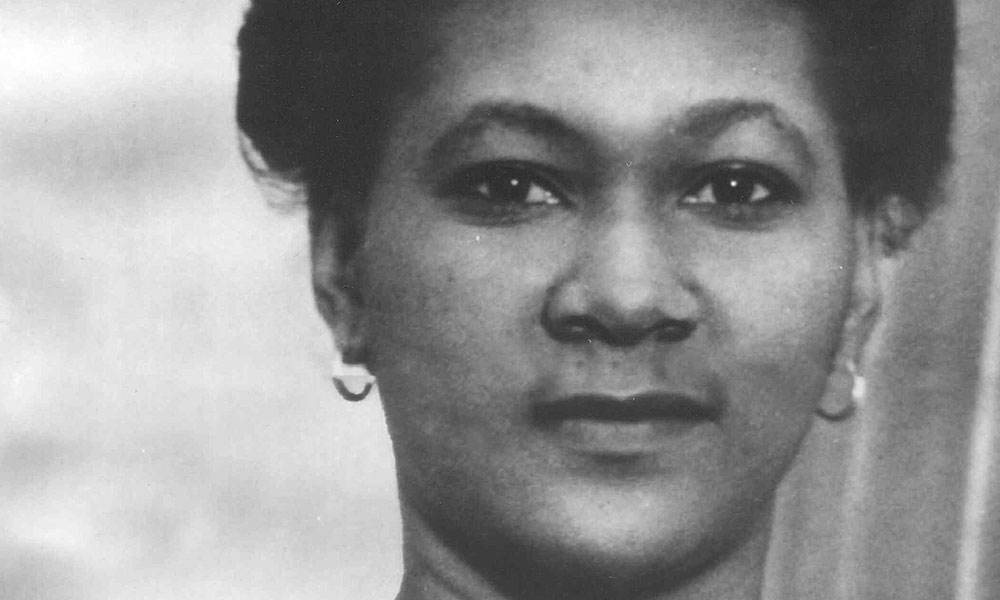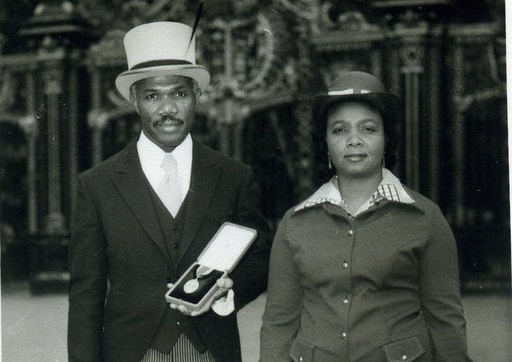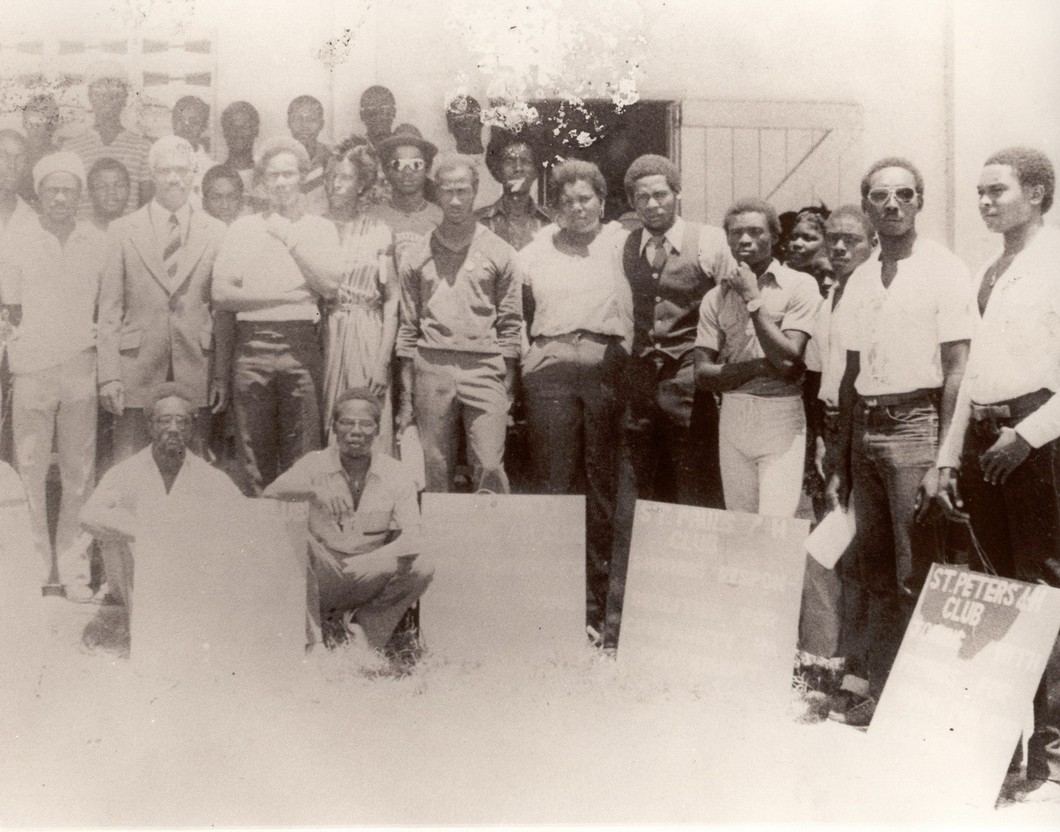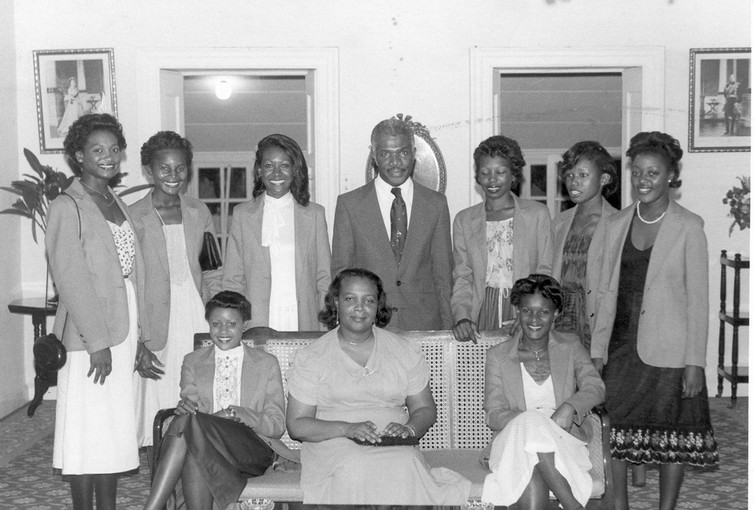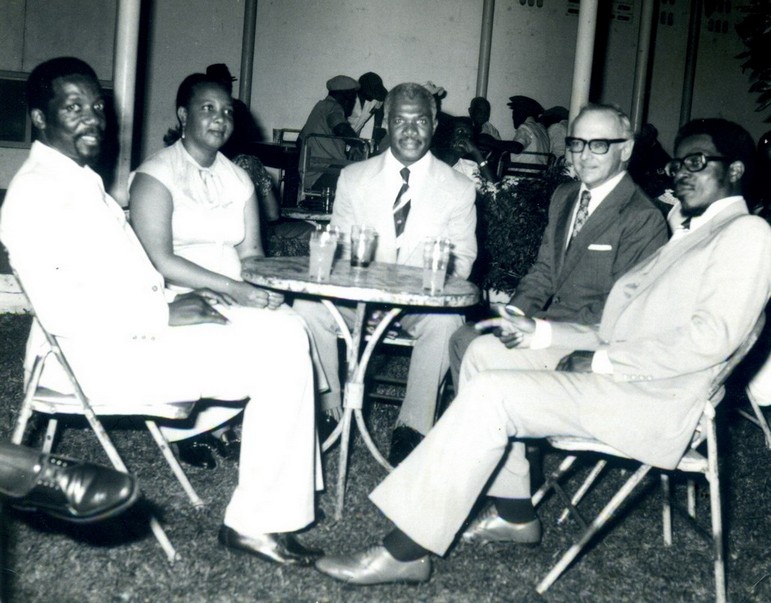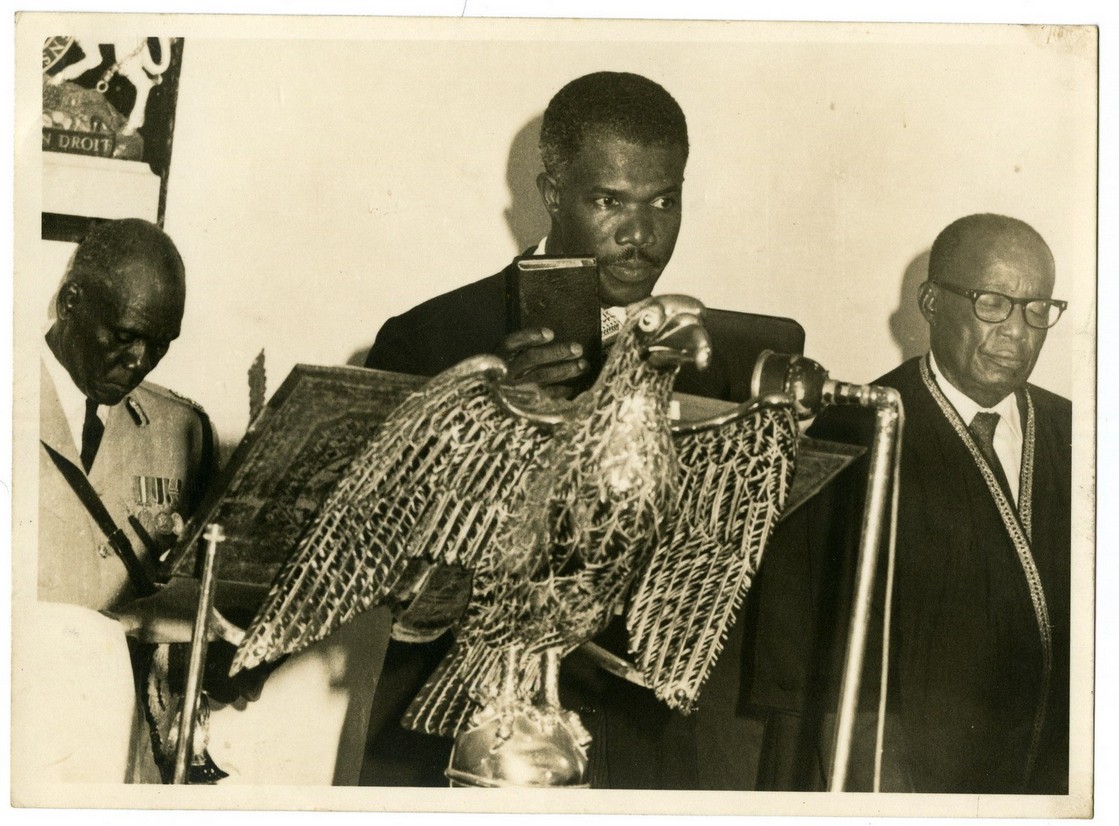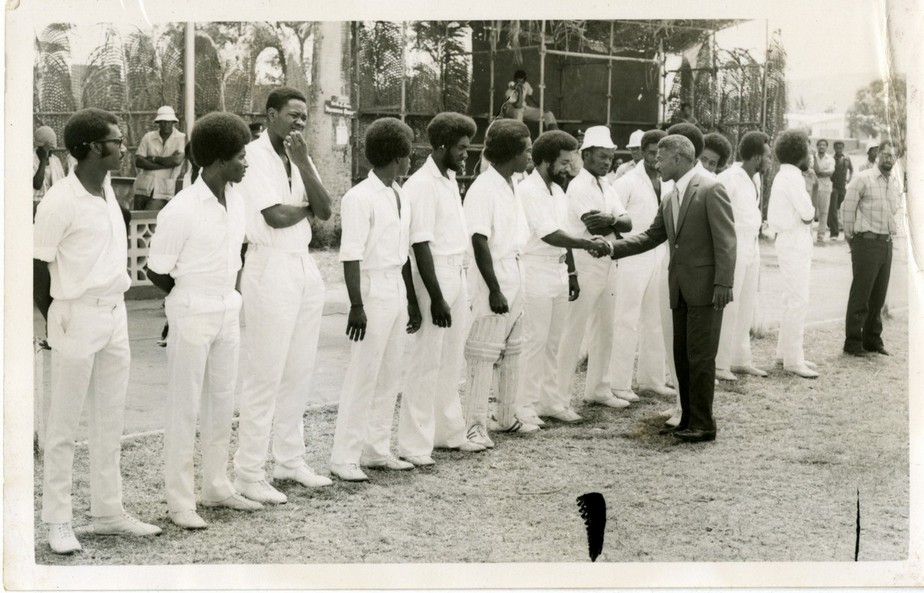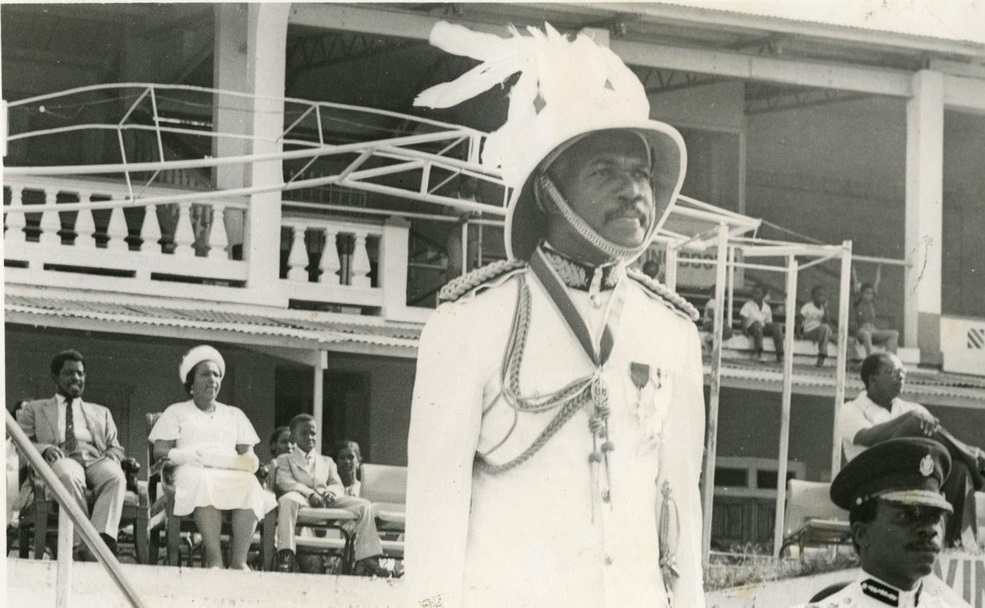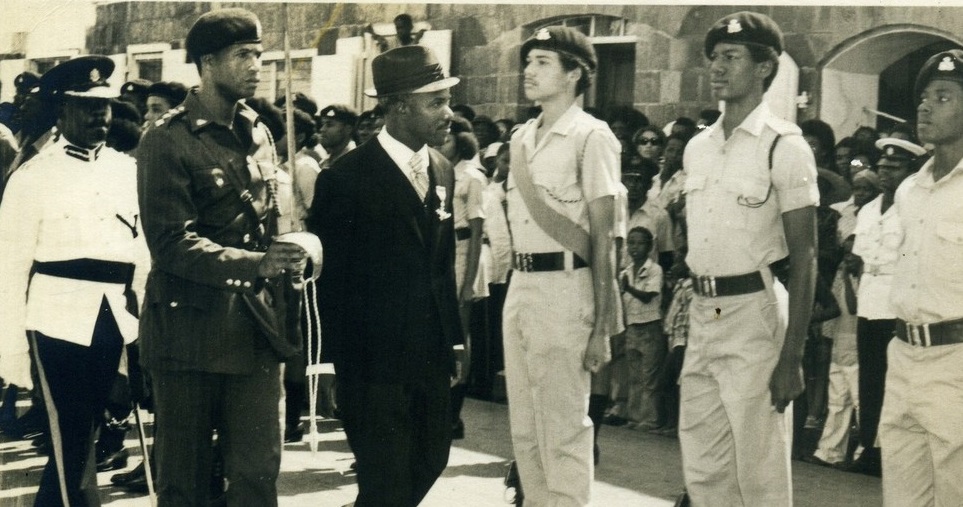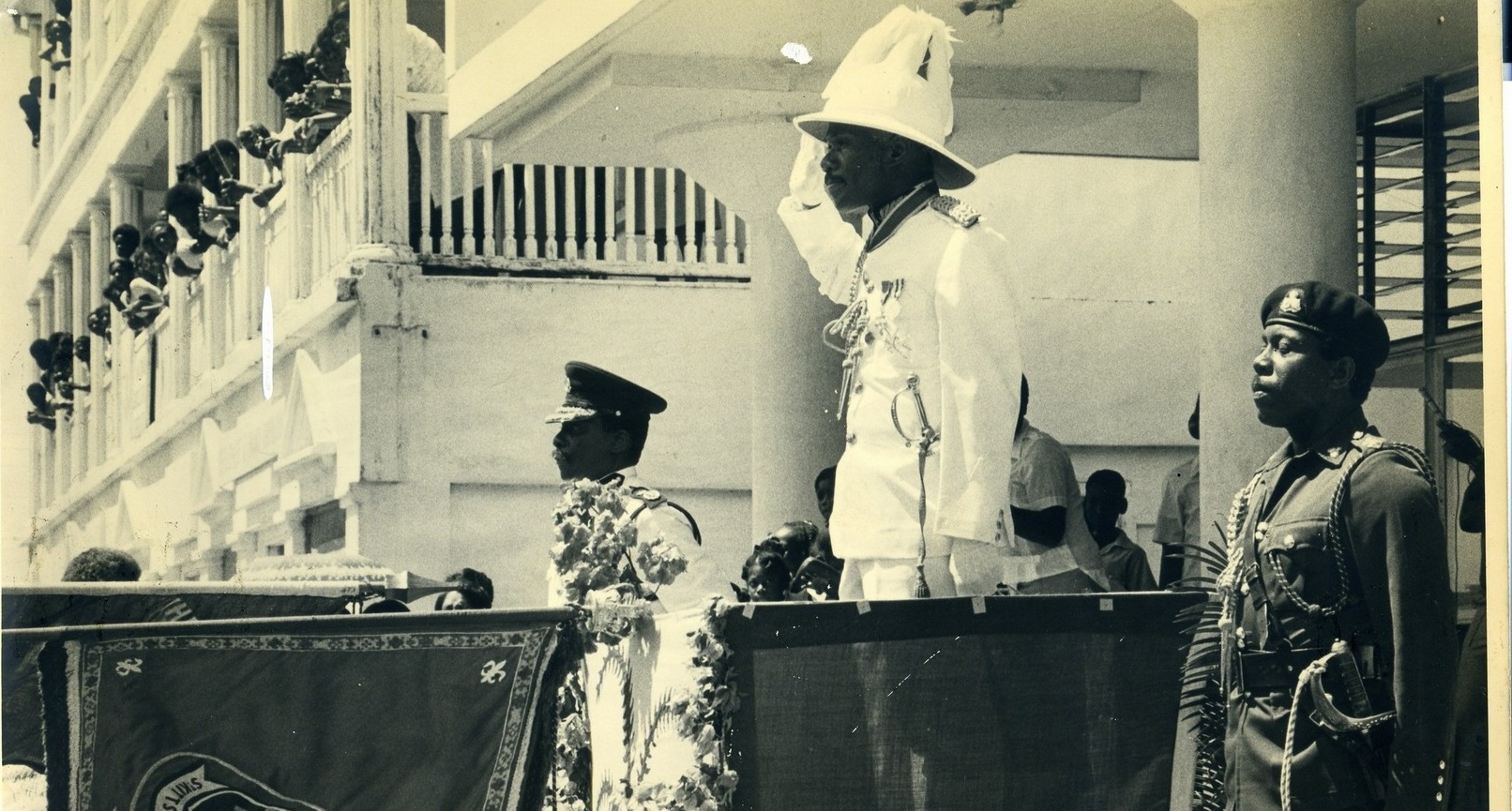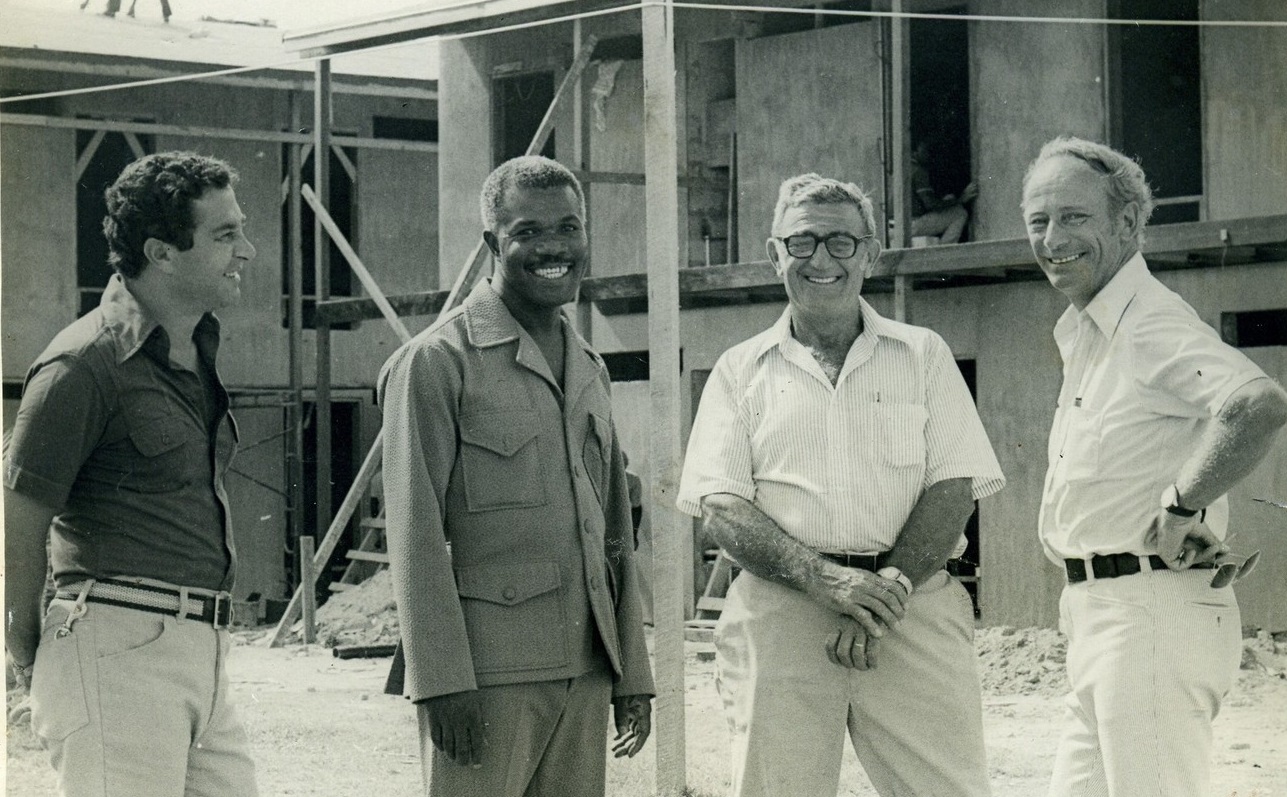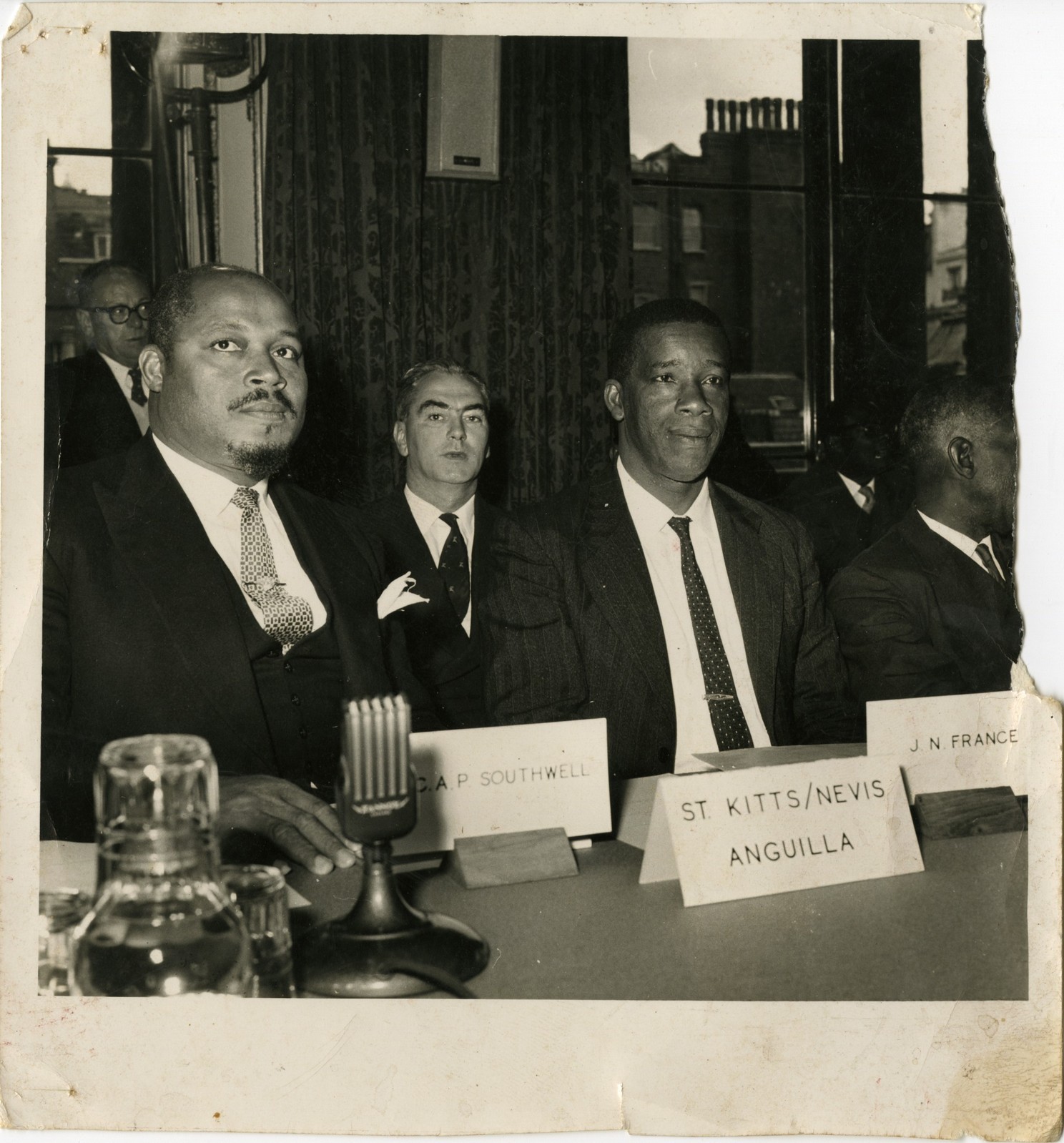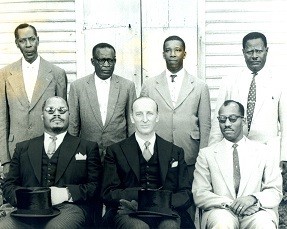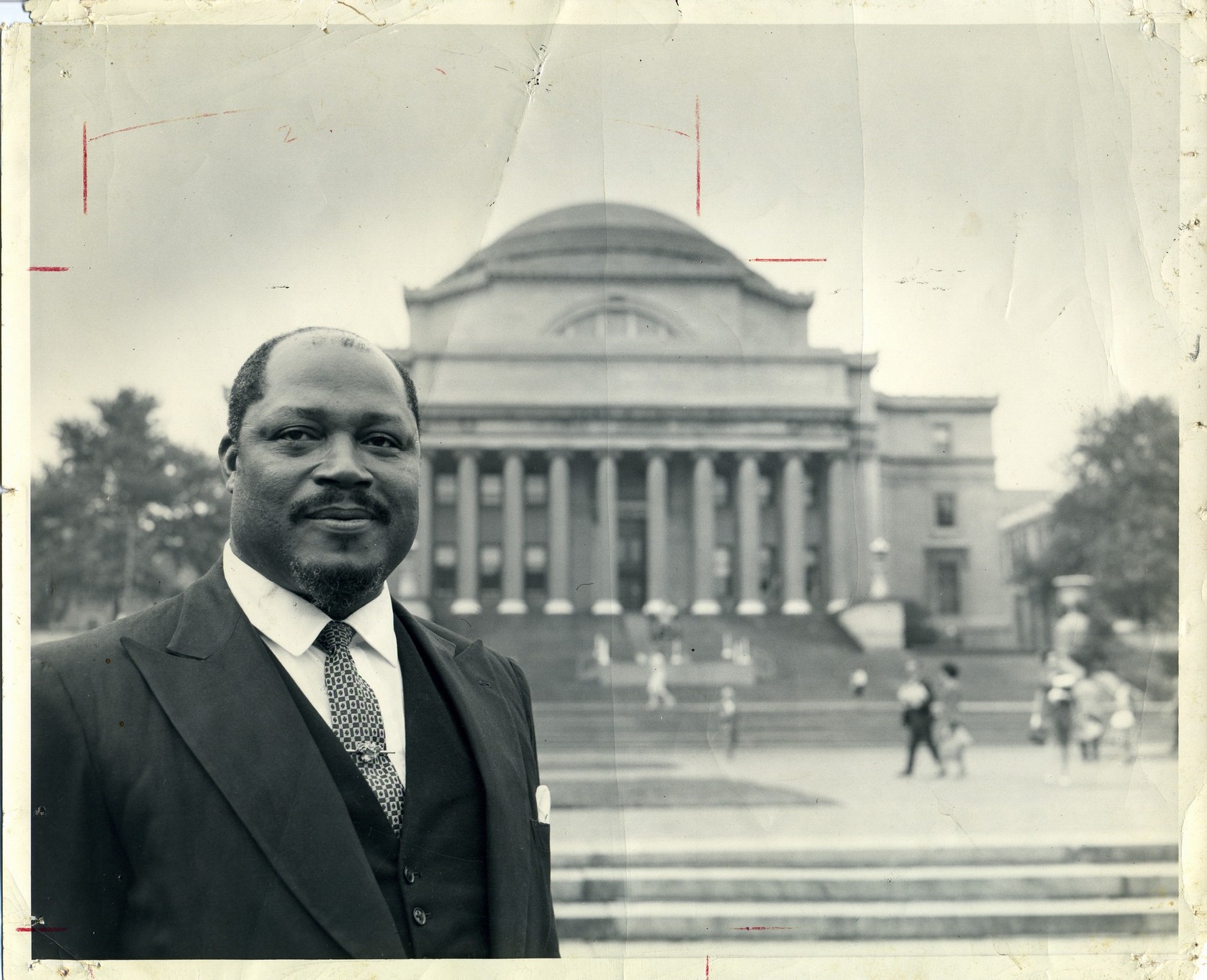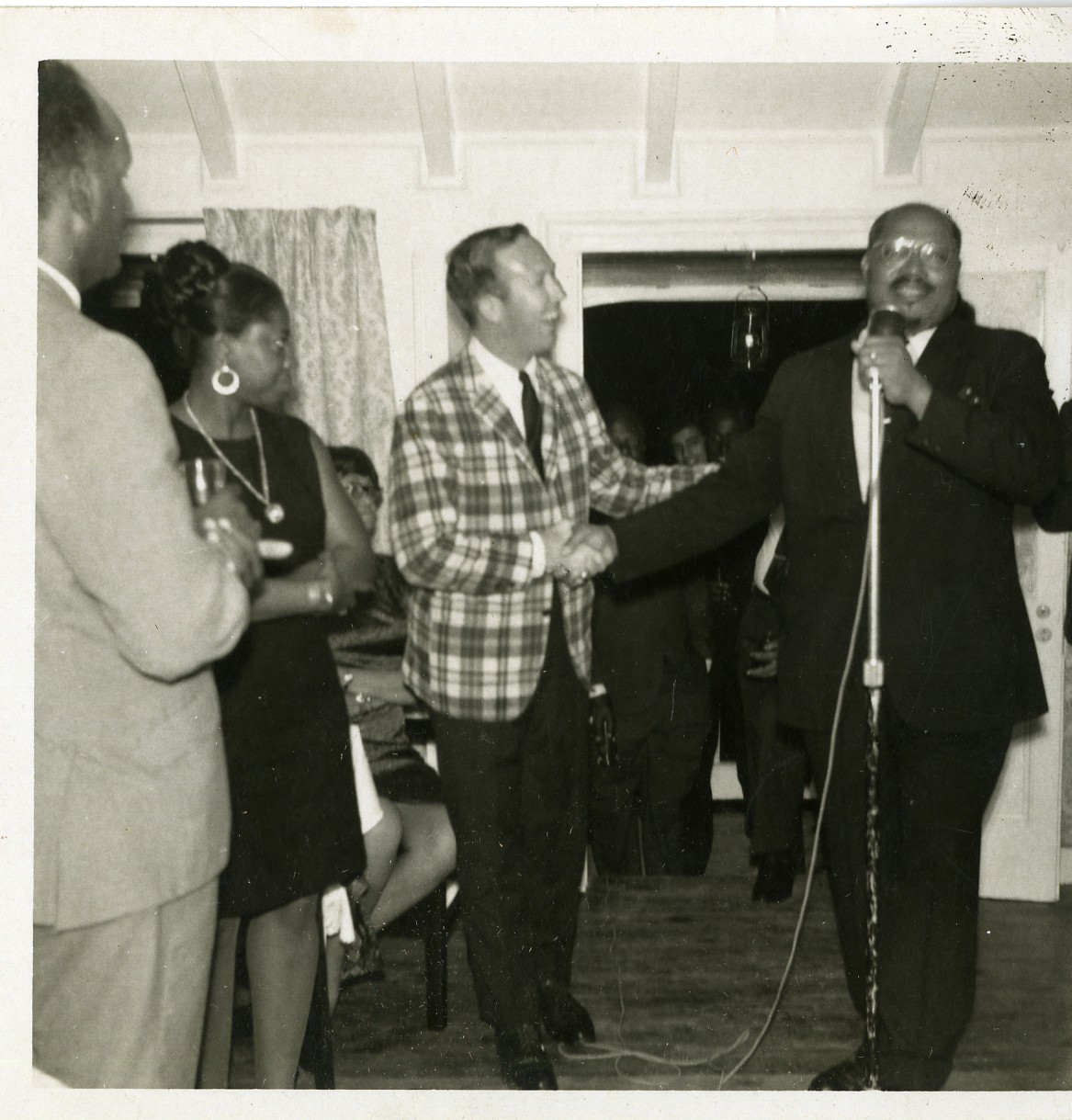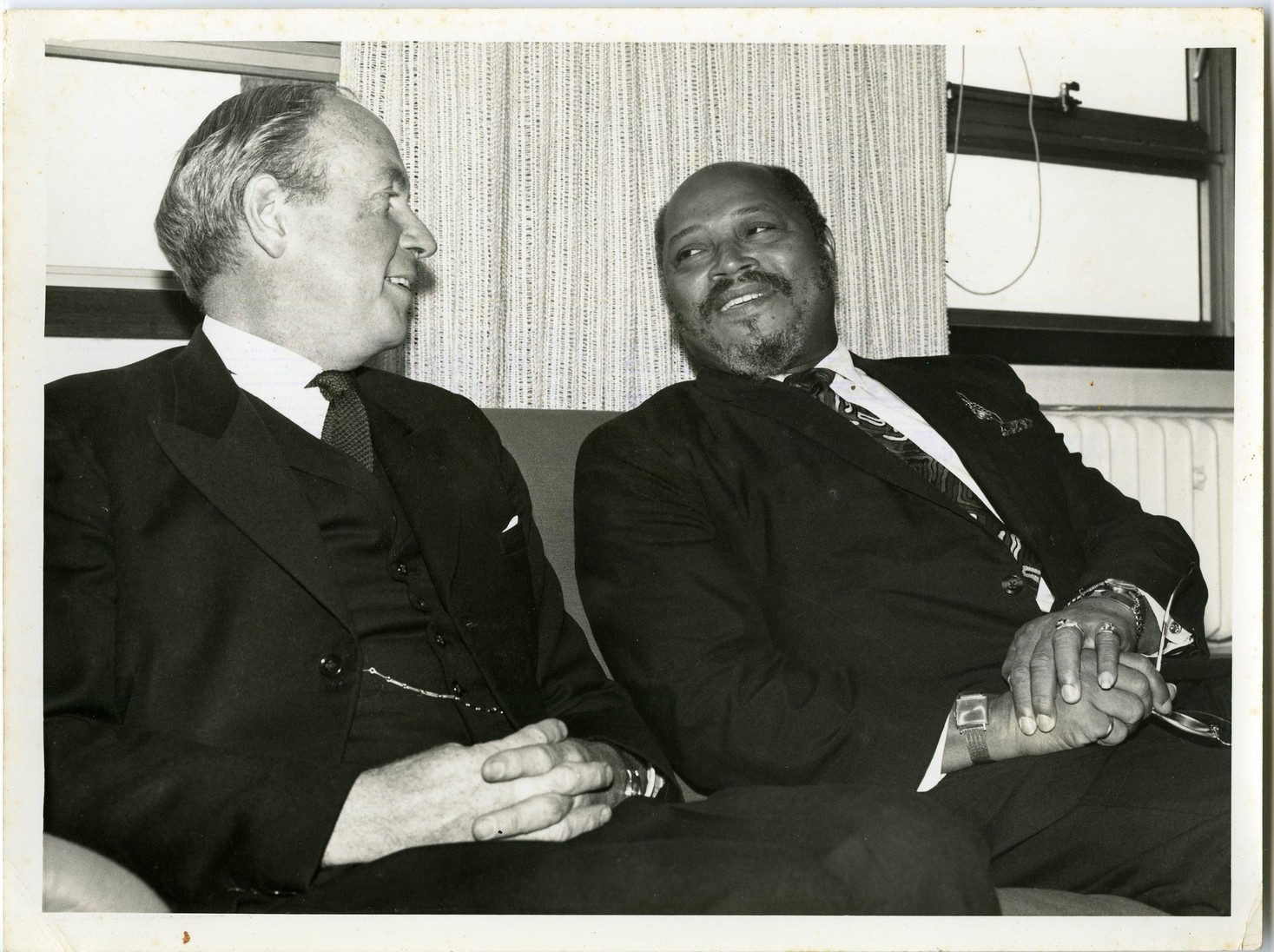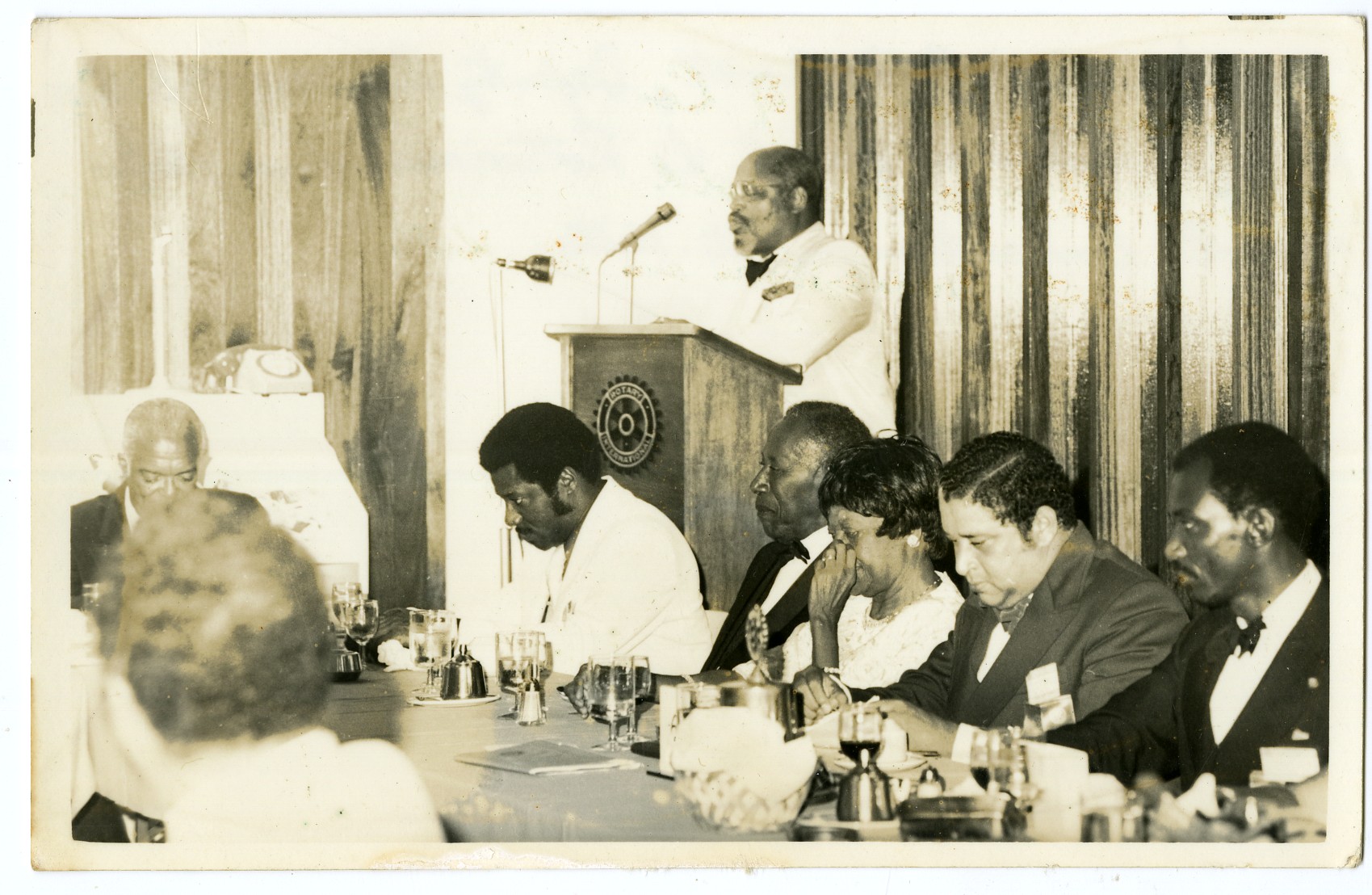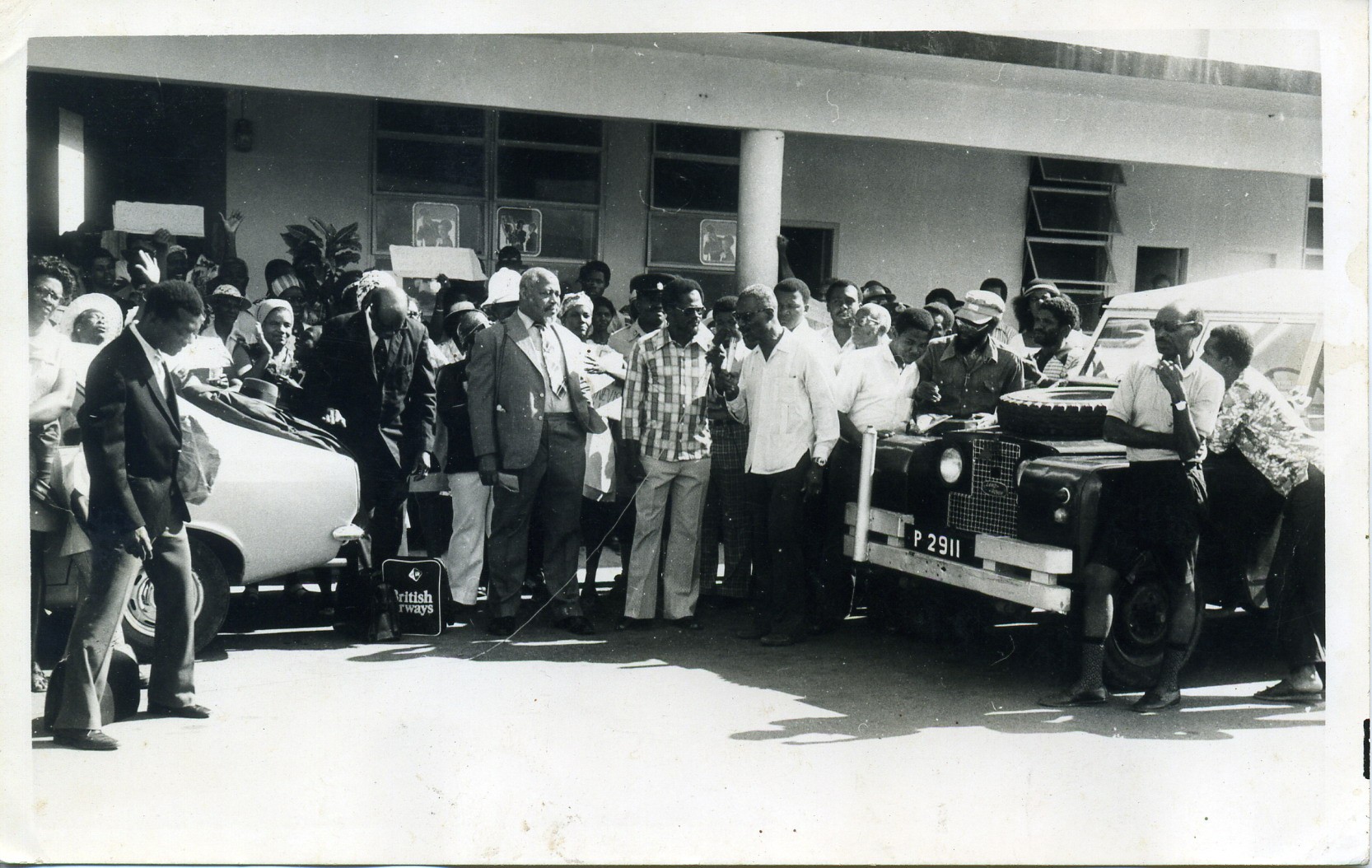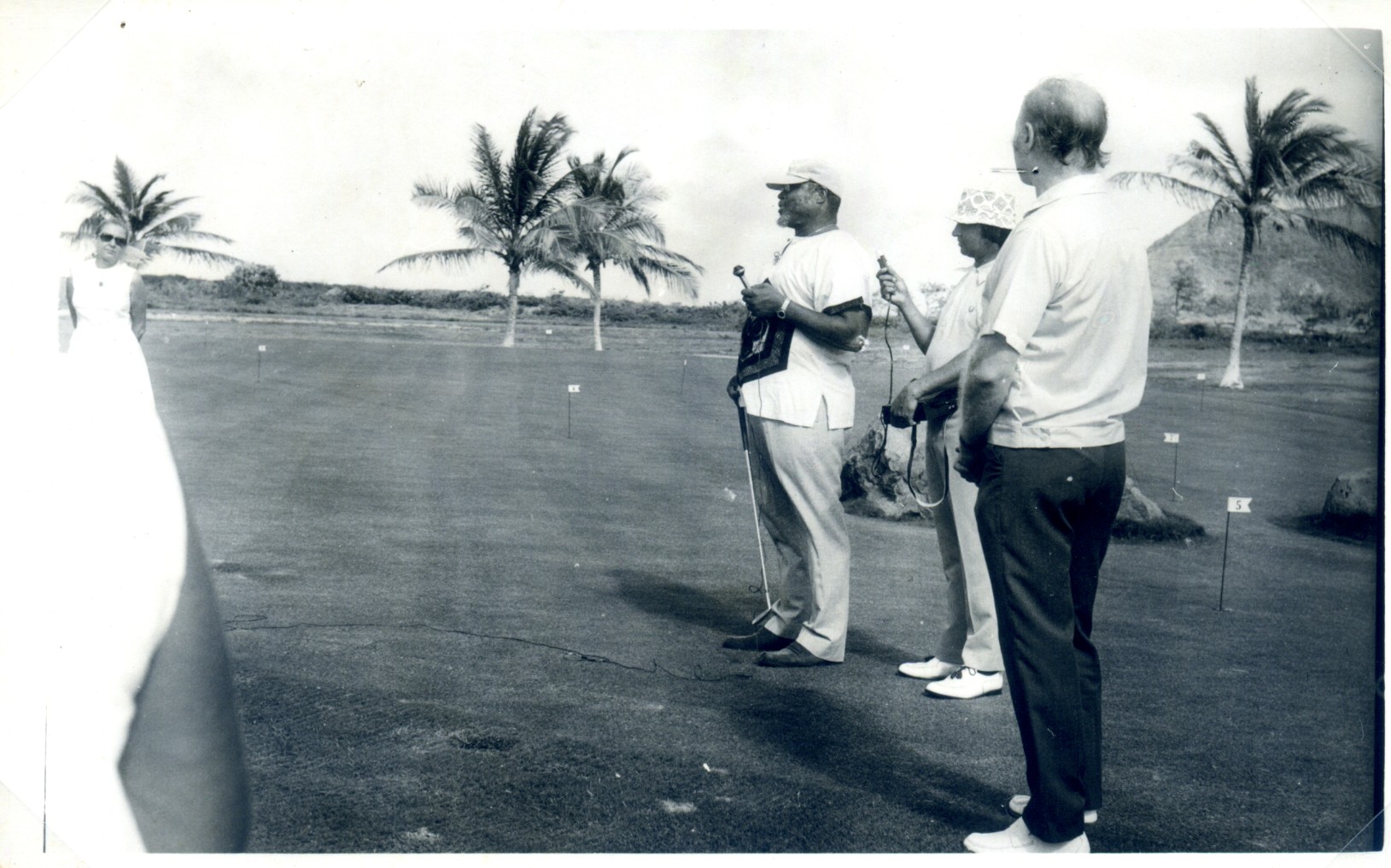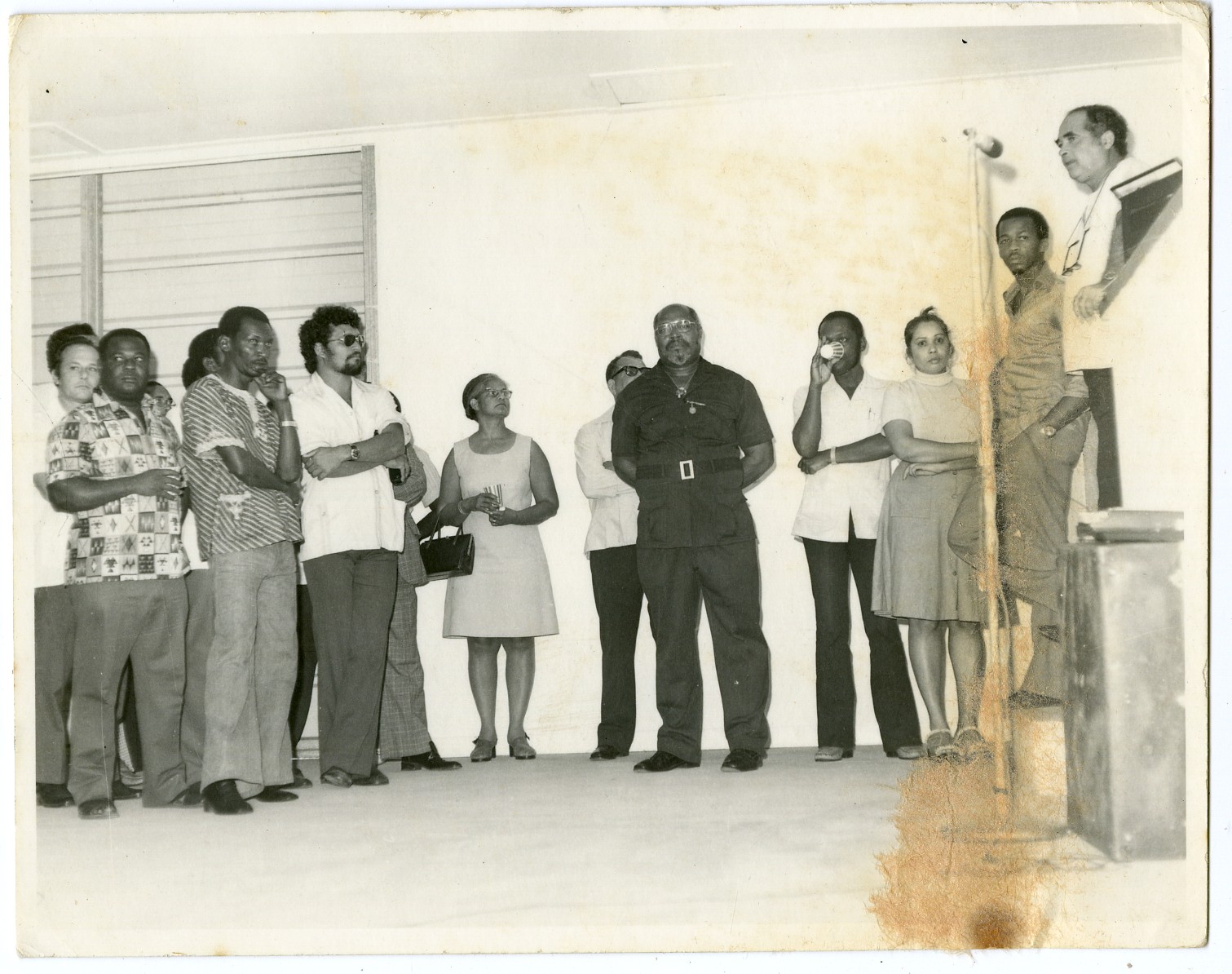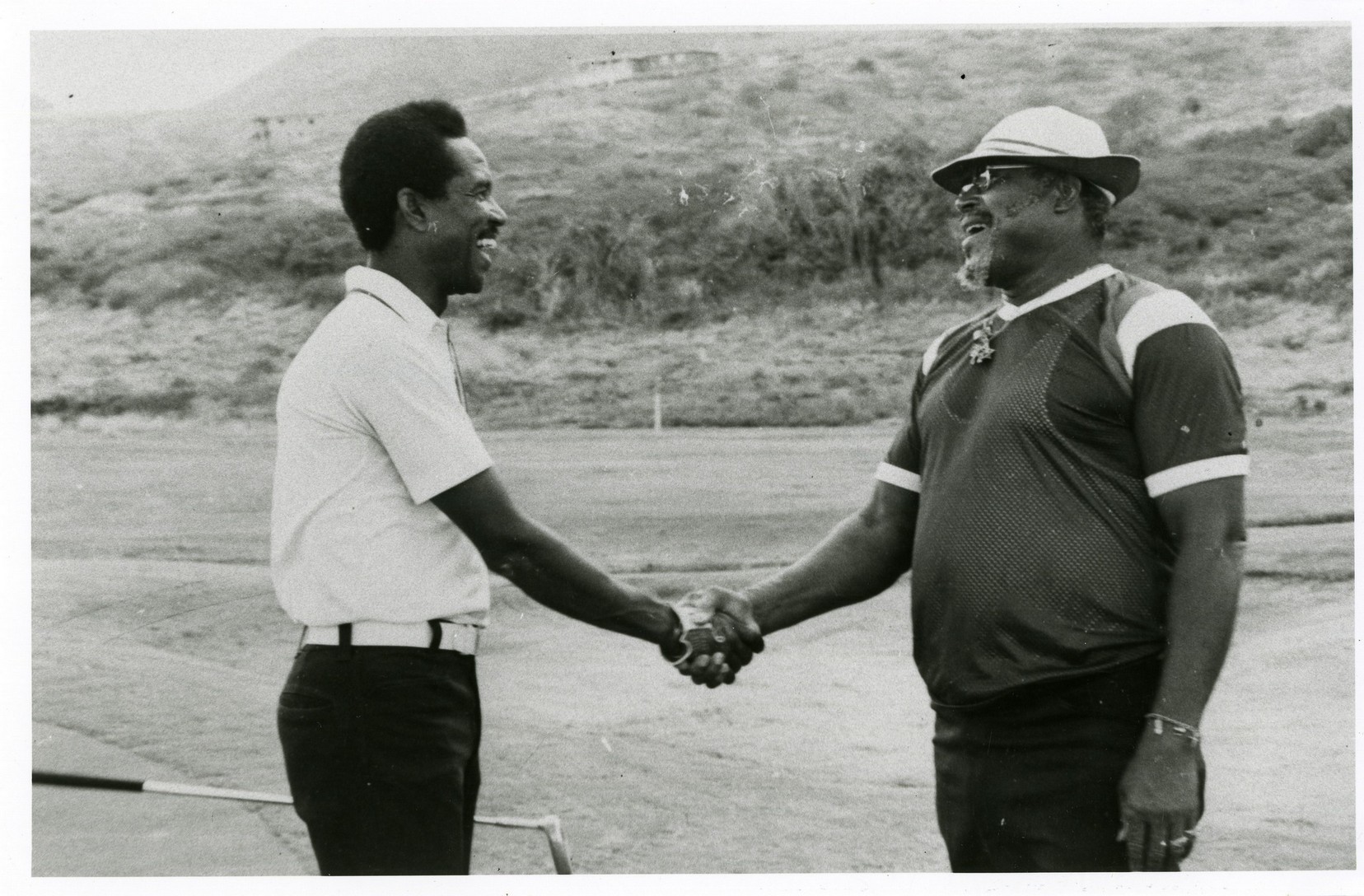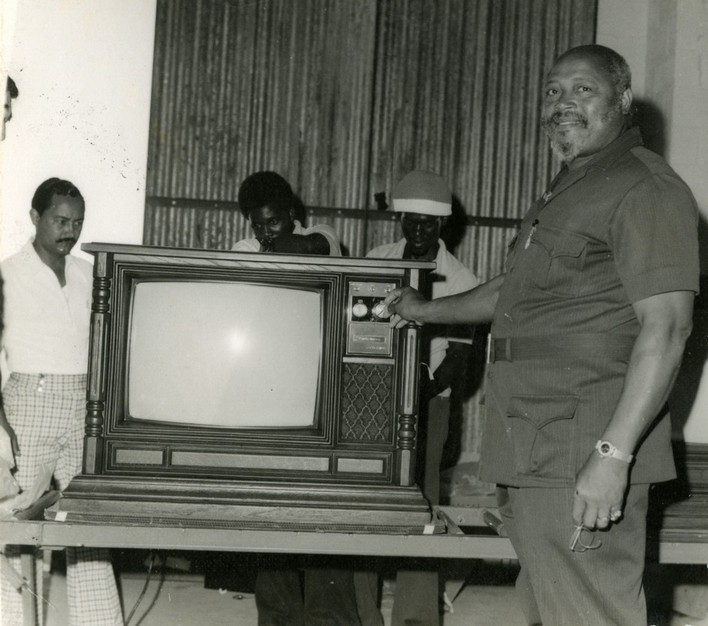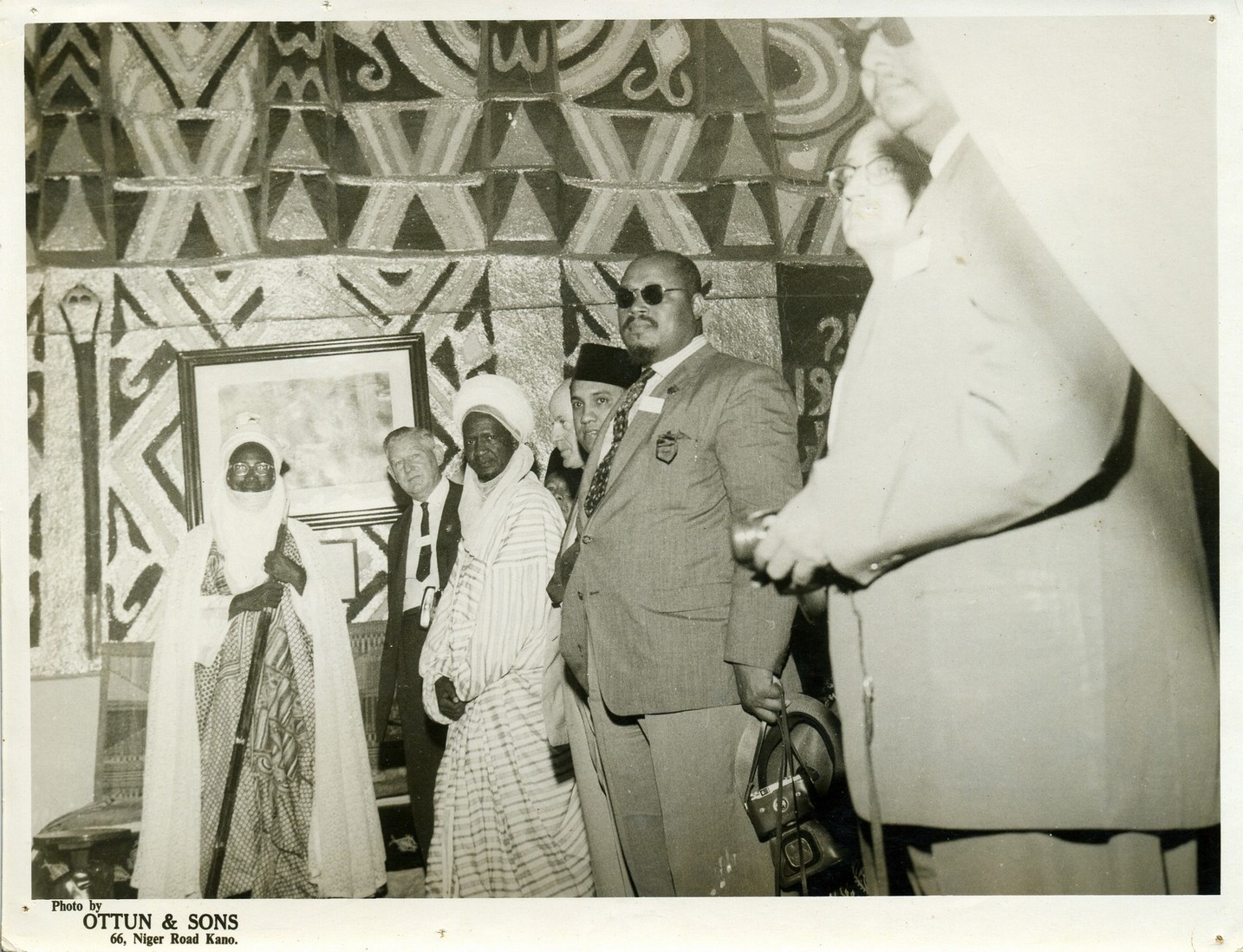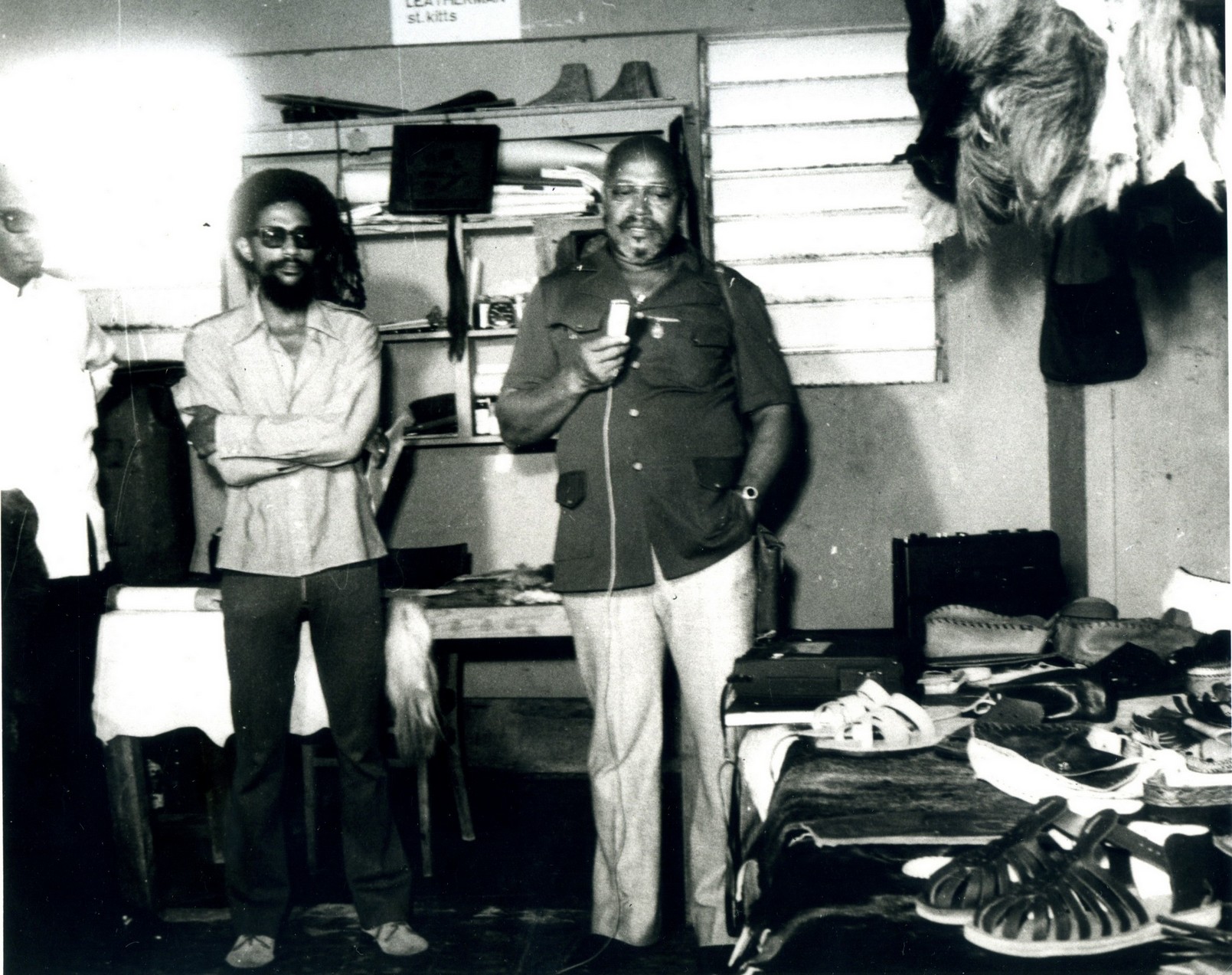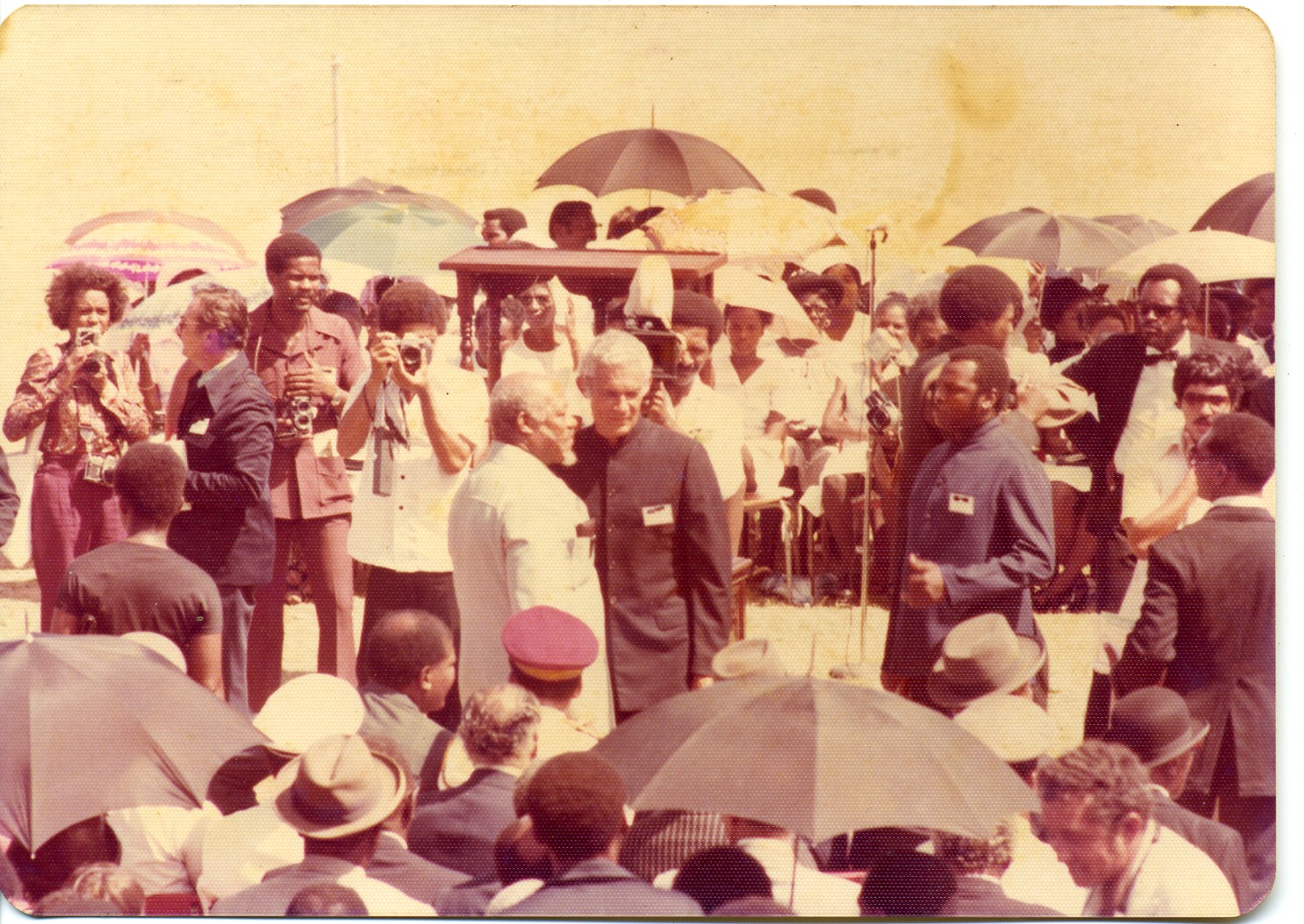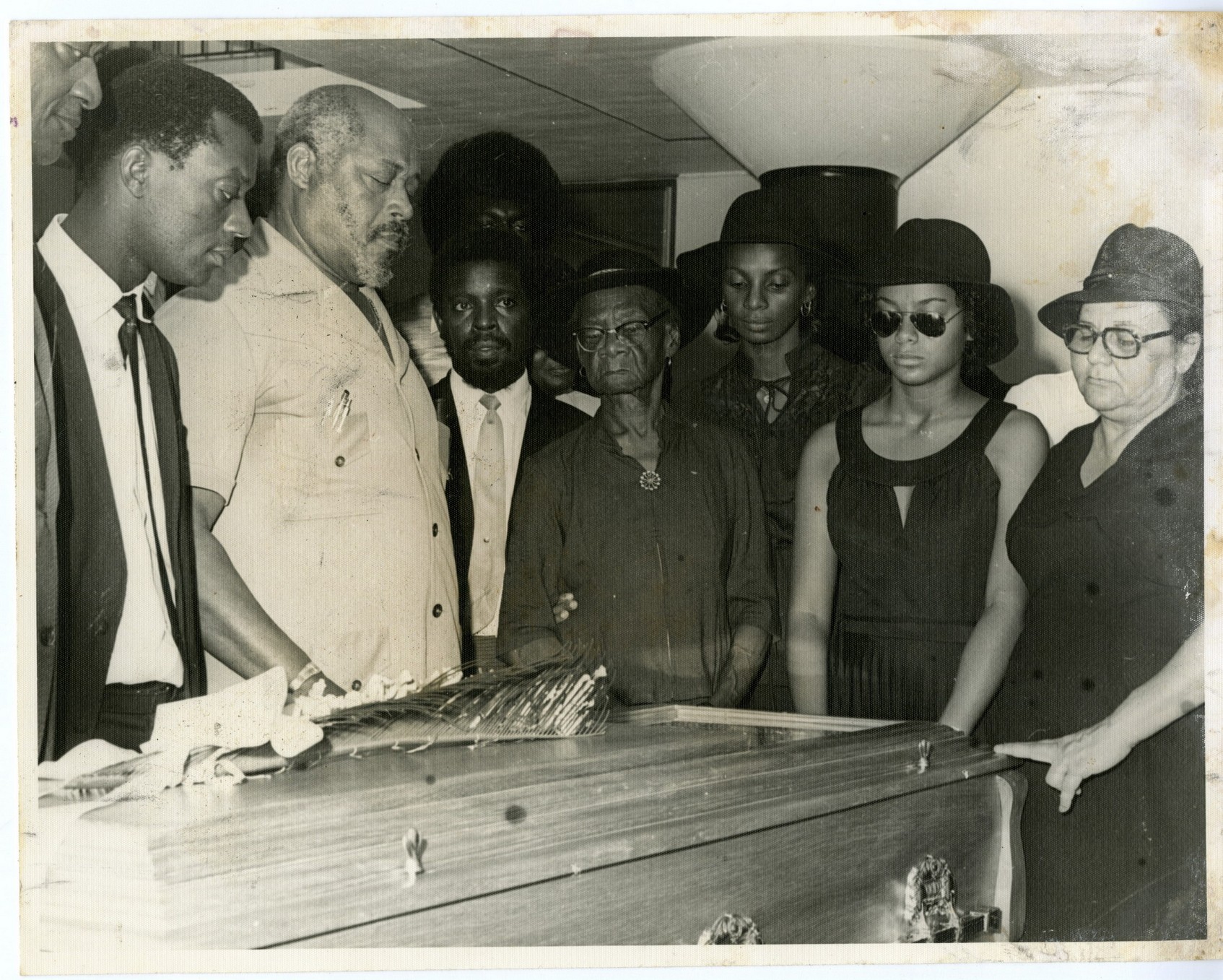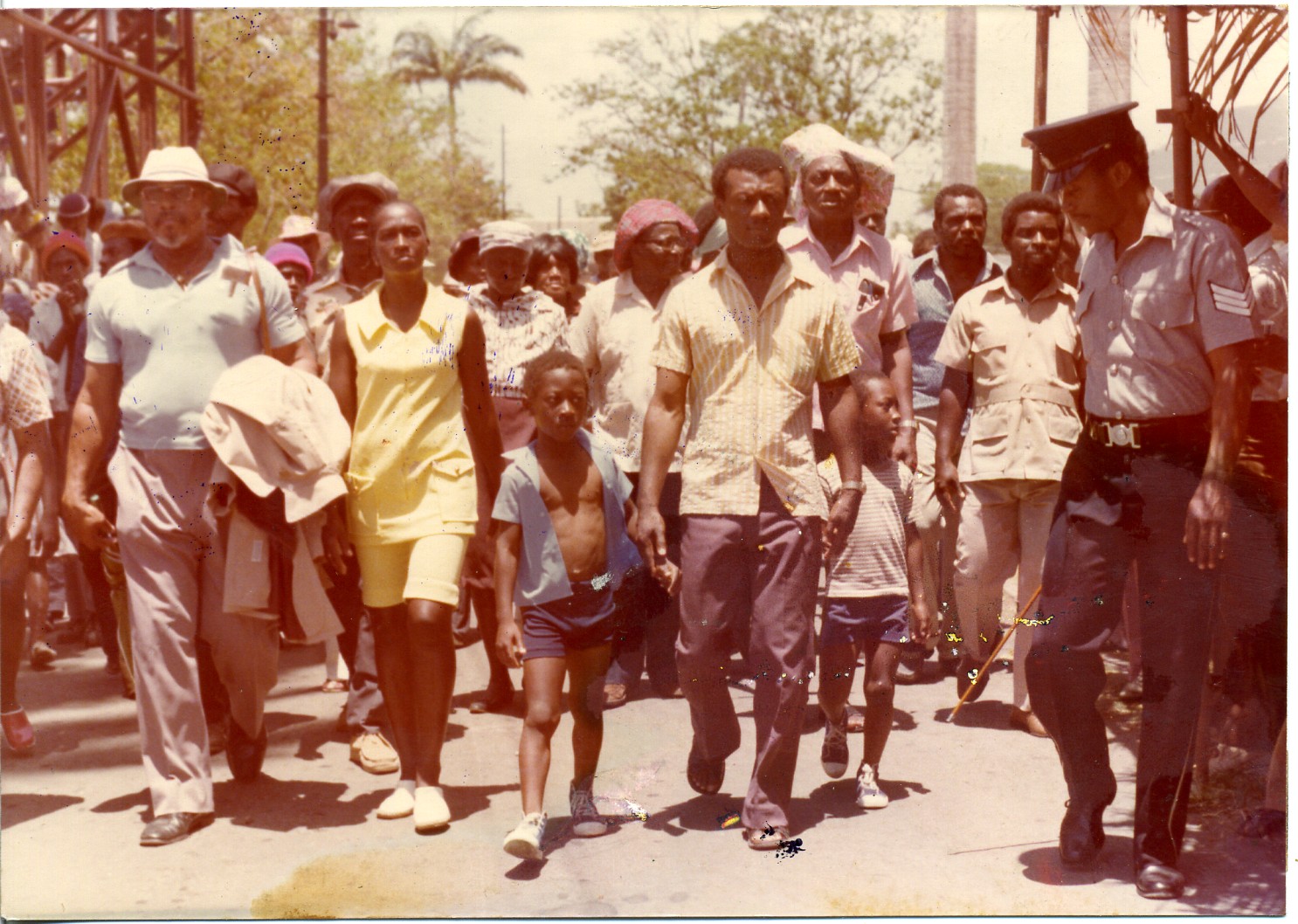Sir Probyn Innis
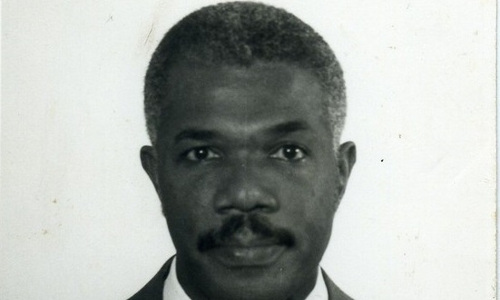
Probyn Ellsworth Inniss was born on the 18th November 1936 at Challengers Village. he was a student of the St. Kitts Grammar School. he attended Trinity Government Primary School from 1942 to 1949. In 1949 he won the St. Kitts Nevis Trades and Labour Union Scholarship to the Grammar School from which he graduated in 1955. For the following two years he worked in the Treasury and Customs Department then went to study at the University College of the West graduating in 1961 with a BA in History, Economics and French. He returned home to serve as a teacher at the Grammar school but soon working as as Acting Administrative Secretary in the Ministry of Social Services. In 1963 he was awarded the Caribbean Commission Scholarship read for a Diploma in Public Administration in Jamaica and on completing his course with distinction he interned there for three months at the Ministry of Development and Welfare. On his return to St. Kitts he served as Secretary to the Campbell Commission inquiring into the sugar industry on the island. By 1969 he had risen to the post of Cabinet Secretary and Permanent Secretary in Establishments and External Affairs. Through the British Technical Assistance Scholarship 1969 he was able to attend law school and take the bar at Middle Temple in 1971
In 1975 he succeeded Sir Milton Allen as Governor of the State. He was only 39 years old. His sense of calm lent dignity to the office that he held. In 1976 he was created Knight Bachelor in 1976.
Inniss found himself in the middle of a political controversy in 1980. In the election of that year the Labour Party won four of the seven seats in St. Kitts. The People’s Action Movement won three seats and formed a coalitions with the Nevis Reformations Party which had won two seats. This was a completely new development for St. Kitts-Nevis. Some felt that Labour should have been allowed to form the Government as it had a majority of seats in St. Kitts and the majority of votes overall. However constitutionally it was the number of seats won that mattered and the Coalition had a majority of one seat. Inniss recognized Kennedy Simmonds' new government. An argument over whether Anguilla was to be included in the title of a law brought his term of office to an end.in 1981.
This was the beginning of his legal practice which was to evolve in a short time into the firm of Inniss and Inniss with his daughter Angela as his partner.
Sir Probyn’s biggest contribution was in the field of heritage. Making use of his quite time when he was Governor he wrote and self-published Historic Basseterre The story of a West Indian Town. It was a popular book and he republished it a number of times. Other books followed. Whither Bound St. Kitts-Nevis examined the political and constitutional l links between the two islands and was very popular in the period leading up to Independence. He also wrote Forty Years of Struggle: the Birth the St. Kitts Labour Party and Methodism in St. Kitts 1787-2006
Sir Probyn served for several years as President of the Brimstone Hill National Park Society and initiated the History and Heritage Week, later History and Heritage Month. He was very active in the Methodist Church, a member of the Board of Management at the Epworth Junior School (now Maurice Hillier School) and firm supporter of the 4 H club.
Sir Probym married Rosamund Aleina Phillip in 1962 and they were the proud parents of three children.
He died on the 12th March 2017.
Notes from an Interview
Eyewitness: Cyril Halbert
Date: 28th January 2005
Place: National Archives
Cyril Halbert was about twelve years old in January 1935. He was a student at the Grammar school which at the time was run by Mr. Williams, an English man. The teachers were Branch, Wooding and Matheson. There were about forty boys at the school. On the 29th January 1935, all the boys were sent home. They were urged to go home as soon as possible and to avoid getting mixed up in anything on their way.
Cyril and two others heard that Mr Manchester was going to talk to the people and went to hear him. Manchester was almost in tears when he addressed the crowd. He asked the people to go home and told them that the negotiations were still going on. Halbert insisted that if they had listened to him, nothing would have happened.
The Rev. Williams of the Moravian Church was also there. He was an eloquent preacher whose sermons at Christmas and Easter often kept the congregation in church for long hours. A short, thick build man, he had been given the nick-name “Jack-in-the-box”. The boys went home after Manchester’s address because they were told not to be on the streets.
Halbert said he knew two of the men who were shot. He remembered Joseph Samuel who was an Antiguan and really did look like J. Matthew Sebastian, the editor of The Union Messenger and a member of the Workers' League and the Universal Benevolent Association. Halbert noticed that Joseph Allen who played cricket with the Renown Cricket Club was shouting invective totally unaware that the Defence Force Reserve was armed with live ammunition.
As a child he found the events of the day intriguing but scary and in hind sight found them to be a very sad moment in history.
William Frederick Solomon

William Frederick Solomon was born in 1881. Little is known of his youth except that he had learnt the carpenter’s trade and in 1911 he was employed on the construction of the Basseterre Sugar Factory. He was dismissed form that job because of his anti-management attitudes. He had successfully attempted to manufacture and sell soap but eventually went into business as a building contractor and undertaker working out of Liverpool Row. By 1917 he had a sufficiently large income to qualify as a juror.
Solomon attributed his involvement in the trade union to a letter written to him by labourers describing their dissatisfaction with the low wages that they received.
In 1917, along with Joseph Nathan and George Wilkes, attempted to form a union to organize labour in St. Kitts. This was during the war and the Administration did not take kindly to the idea. A law was quickly passed prohibiting the creation of trade unions during the war years. He then became the first President of the St. Kitts Universal Benevolent Association. Although it was nit registered as a union, the UBA attempted to operate as one. Solomon’s occupation as a building contractor was important to the UBA as it placed him in a position to offer employment and financial assistance to loyal followers. His involvement with the UBA caused his business to suffer financially. Administrator Burdon claimed that his ‘better’ customers withdrew their business, allegedly because of his ‘anti-white’ speeches. Solomon died in the 19th July 1918 at the age of thirty-seven. His sudden death caused by heart failure was a serious blow to the budding organisation.
William Sendall ('Semblin')
.jpg)
William Sendall known as Semblin was born in Africa around the time when the slave trade was abolished. He was apparently captured as a slave around the age of 19. The exact details of his story are unclear but Sendall claimed that he had been born in Guinea, in Africa and that he had been taken along with about three hundred others off a privateer by a British war ship. He and his companions were given food, water and clothing and finally they were landed at Pump Bay, St. Kitts where he was sold as a slave to Cranstoun Estate. Mr. Padmore was his slave master.
In his old age Sandall remembered 1st August 1834, the first Emancipation Day when the enslaved were freed. He said that ‘all the slaves from Cranstoun, Dieppe Bay and all over travelled to town and Massa gave them dance, plenty of food and a good time.’
In 1934, during the Centenary Celebrations of Emancipation, Semblin who had survived all his twelve children, was apparently 119 years old.. As part of the festivities the old ex-slave was brought into town to attend various functions which included a grand fete at the Moravian School Room organised by F.W. Christopher, Inspector of Schools. He was then driven around town and finally presented with a monetary gift. William Sendall died at his home in Godwin Ghaut on the 16th
January 1939 at the reputed age of 124 years.
Sir Paul Southwell
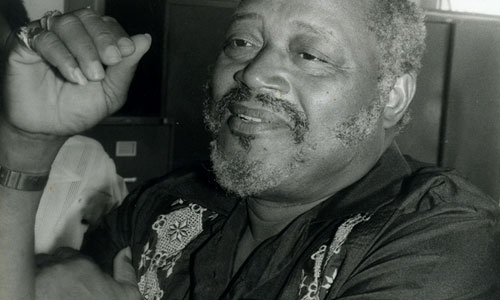
Caleb Azariah Paul Southwell was born in Dominica on the 18th July 1913 to Joseph and Amelia Southwell. He attended elementary school and became a teacher at the age of thirteen years then he went on to obtain the Leeward Islands Teachers Certificate. In 1938 he joined the Leeward Islands Police Force, a job that took him to Antigua, Montserrat, St. Kitts and Nevis. He stayed with the Force for six years.
In 1944 Southwell found employment as time keeper and assistant stock clerk at the St. Kitts (Basseterre) Sugar Factory. It was at this time that he was recruited into the Labour Movement by France and Bradshaw and for the next ten years he assisted as part-time organiser of the St. Kitts-Nevis Trades and Labour Union becoming its Vice President in 1947. In that same year, Southwell attempted to obtain a pay raise but only succeeded in getting himself fired. In 1948 he was in the forefront with other Union leaders organising the Thirteen Week Strike. During the Arbitration that followed, Southwell lead the team that argued the case of the workers in the Union. Following his dismissal from the Factory, Southwell spent a year representing workers free of cost to the Union. Eventually he was appointed the first sole organiser with a wage of $15 a week. He also functioned as associate editor of The Union Messenger.
His talent for writing and his political awareness came together in the publication of two pamphlets - The truth about Operation Blackburn and The Union - What it is, What it does.” the latter co-authored with Robert Bradshaw.
Paul Southwell was elected to the Legislature in 1952 and appointed to the Executive Council in 1955. The following year, when a ministerial system was introduced, Southwell took the portfolio of Communications and Works. Hoping for even more extensive constitutional changes, Southwell lead a delegation to London in 1959 and this resulted in the introduction of a constitution granting a full ministerial system in 1960. The post of Chief Minister was created and the subject of Finance which was previously under the jurisdiction of an overseas official, passed into ministerial hands. With Bradshaw in the Federal House in Trinidad, Southwell became Chief Minister, a post he held until 1966.
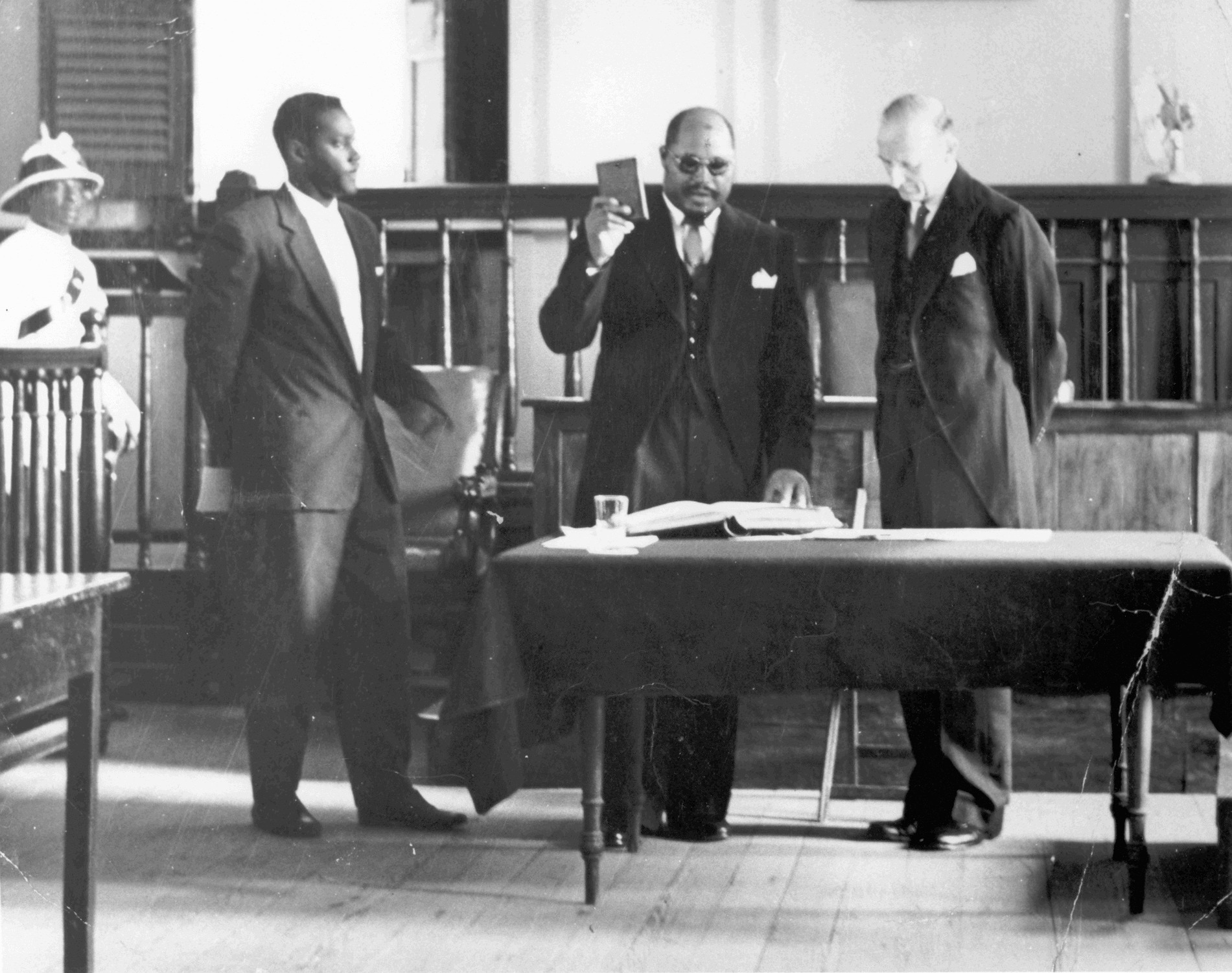
In 1965, the sugar industry employers, refused to grant an increase in wages and refused to request the Sugar Industry Price Stabilization Funds which were available to pay for the increase. In his role as Chief Minister, Southwell ensured that legislation was enacted to draw money from the Sugar Cess Funds to pay for the increases. This step which was subsequently emulated by Barbados and Trinidad drew considerable resistance from the employers and led to the Campbell Commission of Inquiry into the Sugar Industry.
St. Kitts-Nevis-Anguilla assumed the status of Statehood in association with Great Britain in 1967 and Southwell became Deputy Premier and Minister of Finance, Trade, Development, Industry and Tourism. Over the years he found himself very much involved in regional organisations. He was Chairman of the Caribbean Tourism Association and Chairman of the West Indies Associated States Council of Ministers. Following the death of Bradshaw in 1978, he was appointed Premier.
The catch words in the previous election had been “Youth and Experience” and many expected that the new leader would have been either Attorney General, Lee Moore or Minister of Education, Fitzroy Bryant. Although the decision to pass the mantle on the Paul Southwell was unanimous, it was not taken in good grace by all concerned. Within the Labour Party itself there was a strong body of opinion that suggested that the sixty one year old Southwell had no desire to remain as premier beyond the following election which was constitutionally due in 1980.
Until such time Southwell was entrusted with the portfolios of finance, tourism, trade, industry. Commenting on the direction of his administration, Southwell felt that his policies would be the same as Robert Bradshaw’s but that his approach would be different. He recognised the fact that some investors were actually afraid of Bradshaw and he hoped that his way of doing business would dispel such fears and attract enough investors to broaden the industrial base. He worked hard to attract tourism investment and especially to encourage international air services to operate from St. Kitts.
His commitment to sugar as the mainstay of the economy remained unshakeable. Although he recognized that falling prices were a problem he hoped to tide the country over by finding other products that could be produced from cane. Among the suggestions were the use of cane as fodder for animals, the production of structural board and the generation of electricity from bagasse.
Southwell went into his new job as Premier with the intention of finalizing independence as mandated in the previous election. He hoped to reopen the negotiations with Britain over Anguilla. The Nevis problem he saw as maneuvering on the part of that island’s politicians who hoped to gain something by threatening secession. The fragmentation of his own tiny state and the region as a whole made little sense to the man who recognised the fragility and limitations of small island economies. In CARICOM he saw the possibility of a stronger bargaining position for the whole Caribbean.
Southwell was keenly interested in the arts and in sports. He was at different times Librarian and President of the Mutual Improvement Society, and a devotee of the works of William Shakespeare and could quote the playwright at the least provocation. The State’s Art Festival of 1964 was his brainchild and not only was he involved in its organisation, he also took part as one of the lead actors. An avid sportsman, he was the founder of the Chief Minister’s Cricket XI in 1960 and later President of the St. Kitts Cricket Association. He was also an enthusiastic golf player.
Paul Southwell died suddenly on the 18th May 1979 while chairing a meeting of the West Indies Associated States Council of Ministers in Castries, St. Lucia. He was survived by his wife, Gladys, six daughters and five sons.
National Archives
Government Headquarters
Church Street
Basseterre
St. Kitts, West Indies
Tel: 869-467-1422 | 869-467-1208
Email: NationalArchives@gov.kn
Website: www.nationalarchives.gov.kn
Follow Us on Instagram

